


|
 |
|
|
#1 |
|
Registered Member
Join Date: Aug 2015
Location: San Diego
Posts: 104
|
I have a huge GHA problem. that last 2 1/2 months i have been finding myself scrubbing my rocks twice a week due to high GHA growth in my tank almost a farm growing. I have tried everything 20% water changes every other day(that didn't work) i also have lowered my lights on my XR30 pros down to 20 percent intensity from 40%, feeding less and i change my GFO every 2 1/2 weeks. I also have a protein skimmer and a UV sterilizer( the UV has nothing to do with GHA im sure.) im slowly giving up on the GHA on my rocks and im about to buy new dry live white rock and seed it for a month and swap it out i gotta figure out how to get my coral off my live rock or just scrub the heck outa it. are my rocks leaching phosphate? My test levels are reading 0.0 nitrates 0.0 PO4 salinity 1.026 and calcium and alk and mag are all in slightly elevated levels but in normal range.
|
|
|

|
|
|
#2 |
|
Registered Member
Join Date: Oct 2013
Posts: 736
|
Is it a new tank? This is often a phase with new tanks...
If you have GHA there is a nutrient issue, the zero readings are misleading because GHA is consuming the nutrients. GFO and patience. Read up on carbon dosing and ATS. Don't start with new rock, keep up GFO and you'll beat GHA. -droog |
|
|

|
|
|
#3 | |
|
Registered Member
Join Date: Aug 2015
Location: San Diego
Posts: 104
|
Quote:
Last edited by Lunchbox360; 03/03/2016 at 06:19 AM. |
|
|
|

|
|
|
#4 |
|
Registered Member
Join Date: Mar 2013
Location: Central NC
Posts: 5,062
|
If you started with dry rock and you didn't acid-wash it, yes, there's a possibility that it had a fair amount of precipitated calcium phosphate on/in it, which is allowing the GHA to grow on the surface. As droog notes, however, there's little to do but wait it out and continue to remove what nutrients from the water column that you can with GFO, GAC and a good skimmer.
If you really want to replace your rock, I'd strongly recommend that you replace it with actual live rock (and not Fiji boat rock). There's several places that you can get high-quality Indo-Pacific rock, and a really excellent aquaculture company in Florida called Tampa Bay Saltwater. The Indo-Pacific live rock may need to be cured, depending on where you buy it from. TBS's rock does not. If you decide to replace your rock with a new set of dead rock, read up on acid-washing it on the forum. It's pretty easy to do and will reduce the amount of precipitated phosphate you'll need to deal with in the tank. |
|
|

|
|
|
#5 |
|
Registered Member
Join Date: Oct 2015
Location: WV
Posts: 39
|
Hi, Im kind of new to all this and couldn't help but notice the thread. I recently bought a 6 step ro/di system. So I have been using between tap and purified water from my local store. Which my tap had phosphates in it. Which I am pretty sure has leached into my live rock. I've read that your rock can leach the phosphates out. How long would one say it would take, with frequent water changes, to get the phosphates out?
Also, if you don't mind me asking. Could one explain the difference between Fiji rock and Indo-Pacific rock? |
|
|

|
|
|
#6 |
|
Registered Member
Join Date: Mar 2013
Location: Central NC
Posts: 5,062
|
I'm afraid it's impossible to say how long it will take to leach most of the precipitated phosphate out of rock that's absorbed it, because it sensitively depends on how much phosphate was absorbed, which is dependent on the total phosphate concentration in the water, the average pH of the aquarium, average calcium content of the water, and other factors.
Typically, it's at least several weeks for very lightly affected rock, up to several months for excessively compromised substrates. Note that getting the phosphate to leach out and eventually be depleted requires keeping the phosphate concentration of the water very low, typically with the use of Granular Ferric Oxide (GFO). With respect to the differences between live rock sold for aquarium use, you've the choice of aquacultured rock from the gulf of Mexico (Here's a good place to get it), wild-harvested indo-pacific rock (typically from Bali, but there are other locales, including Fiji as well) that's air-freighted to the US, and so-called "Fiji boat rock" that's harvested in Fiji, packed and put on a boat for transport to the US. While Fiji Boat Rock is certainly cheaper, very little of the original life on it will still be alive when it reaches your hands. If you choose, you can get indo-pacific rock air-shipped directly to you from places like Bulk Reef Supply and livestockusa.org. Edit: There's also something you may see for sale called Real Reef Rock. The catch is that it isn't real, it's not from the reef, and it's not rock. Don't buy it - it's basically concrete that's dyed purple and "aquacultured" in greenhouses, and it's expensive. |
|
|

|
|
|
#7 |
|
Registered Member
Join Date: Oct 2015
Location: WV
Posts: 39
|
Thank you for helping me understand.
__________________
~Don't blow smoke.~ ~Lies are like snowballs, the farther they roll, the bigger they get.~ Current Tank Info: Slowly turning into a soft coral tank |
|
|

|
|
|
#8 | |
|
Registered Member
Join Date: Aug 2015
Location: San Diego
Posts: 104
|
Quote:
(if this doesnt work then i would go to the next step). Step 1: do about 50% water changes every other day until i reach 300% then im going to start using the Red sea No3 Po4-x and dose that everyday for about a week or two then repeat with the 300% water change. Step 2: take out all live rock scrub the rock until my hands fall off carefully because my corals are still attached. go in my tank and clean up the substrate really well, clean out my overflow really well, clean out my sump really well re insert my rock and corals. Step 3:buy new rock do a acid wash rinse real well and cure the rock. then remove all rock and then throw it away re insert new rock and corals this is my tank and what im dealing with 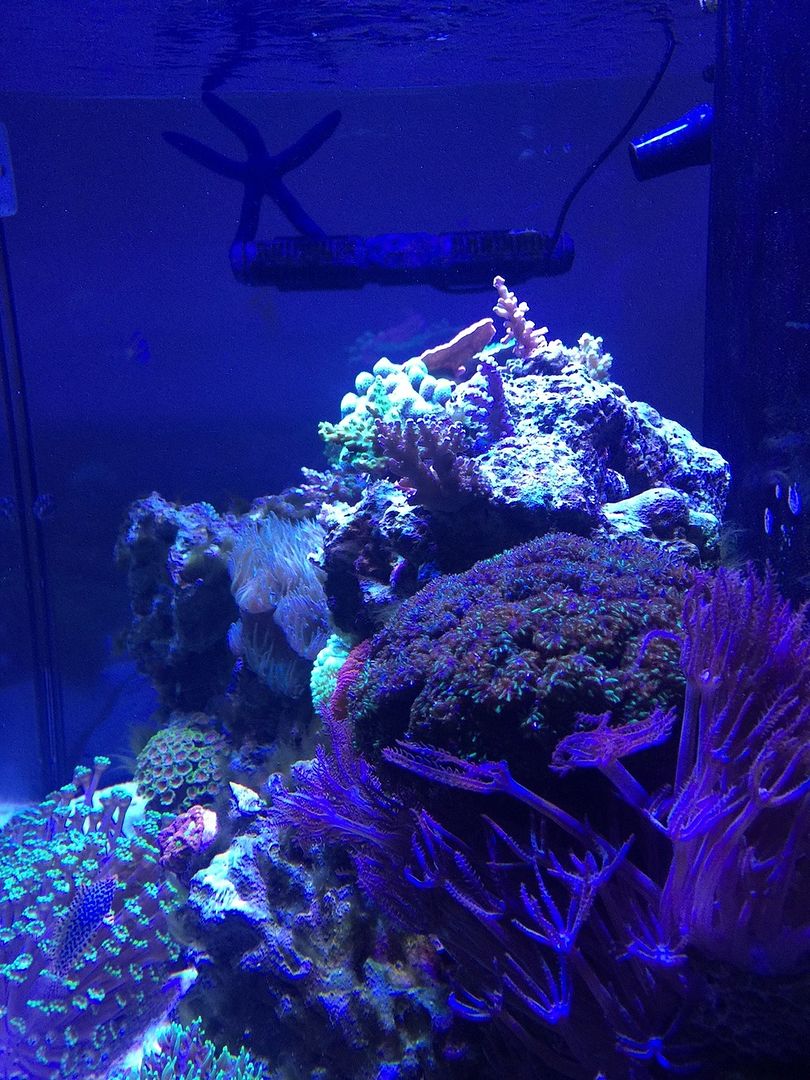 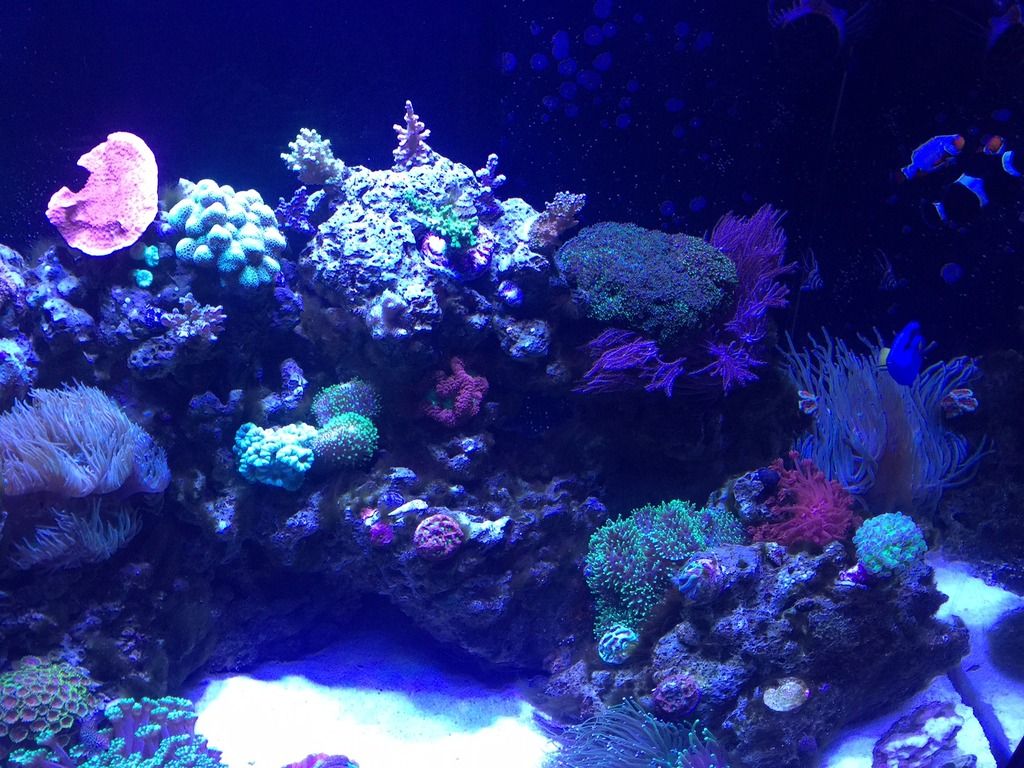 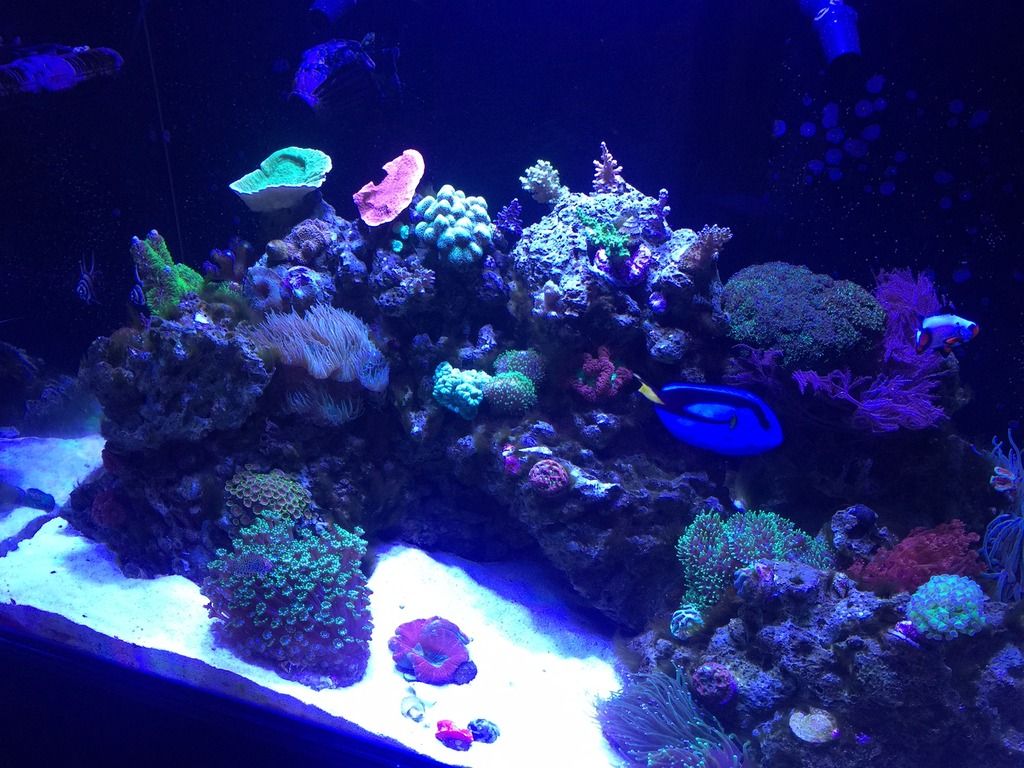    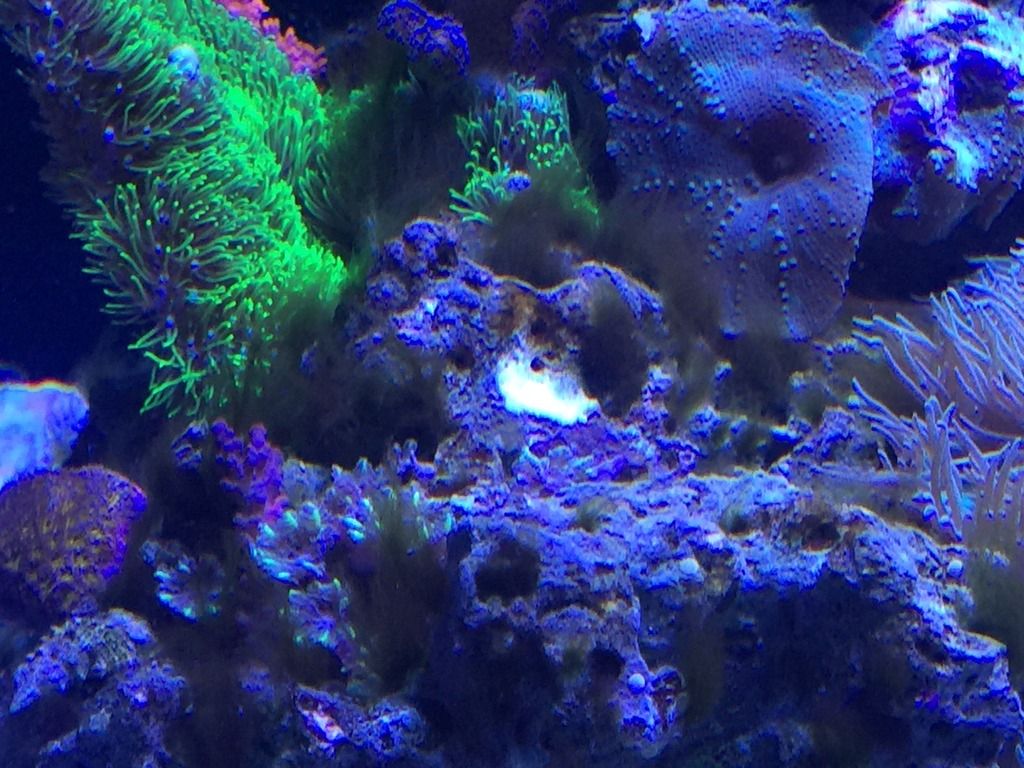 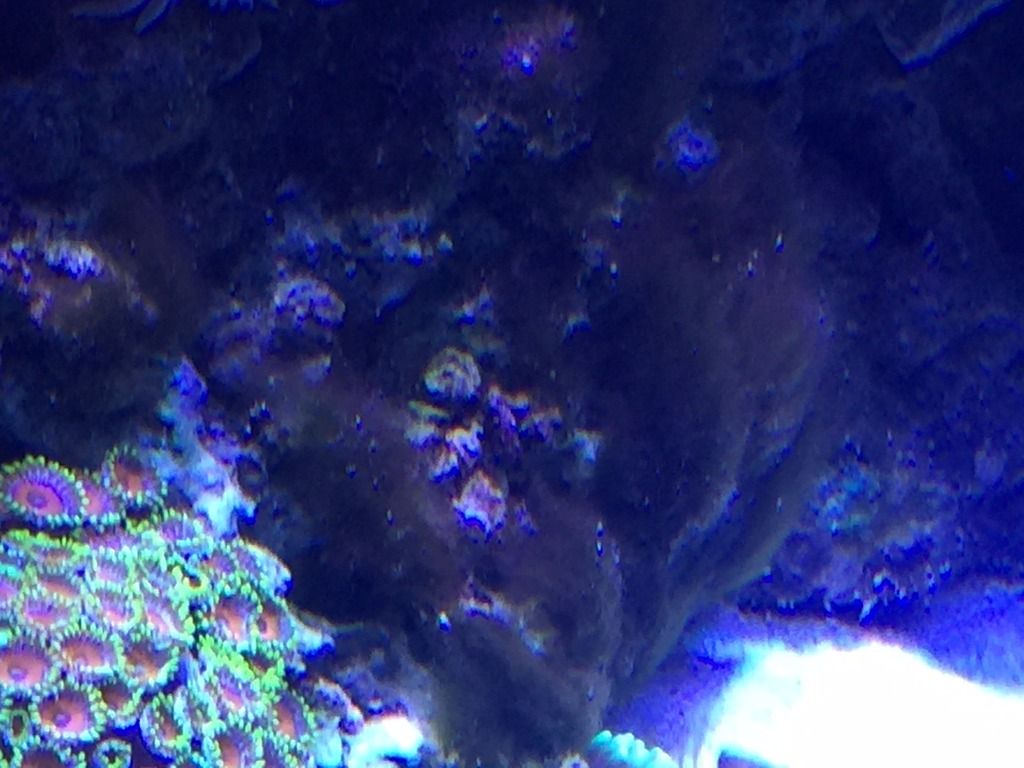 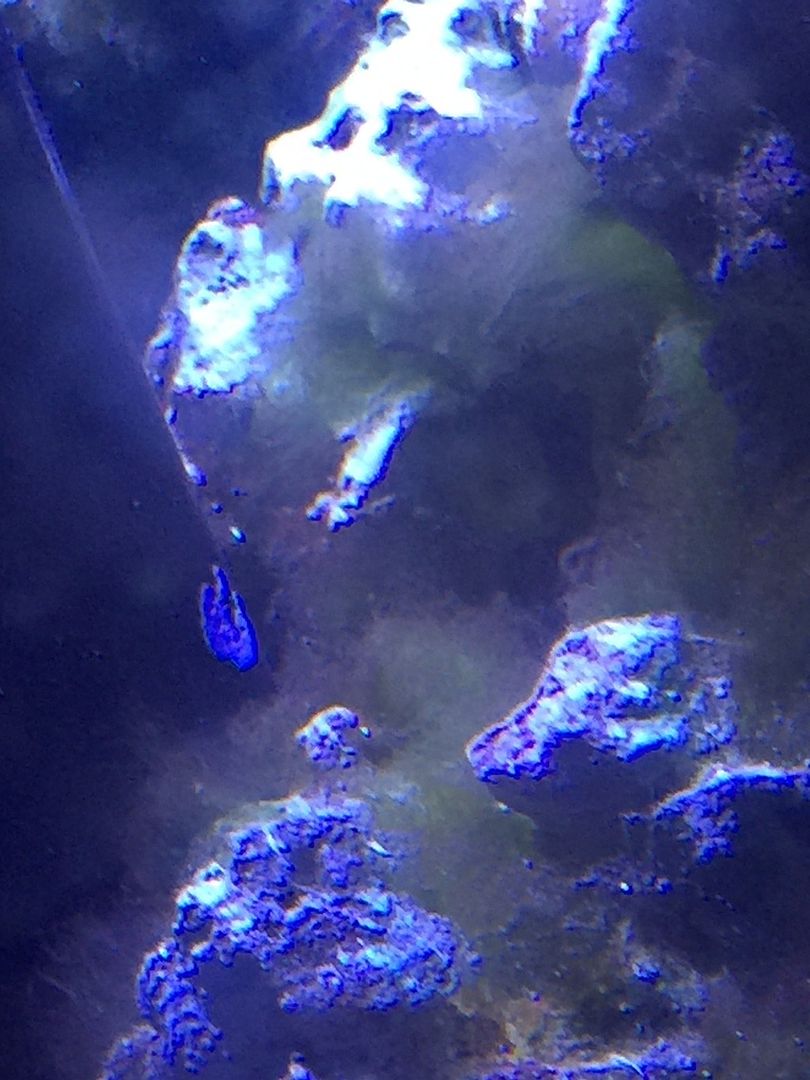 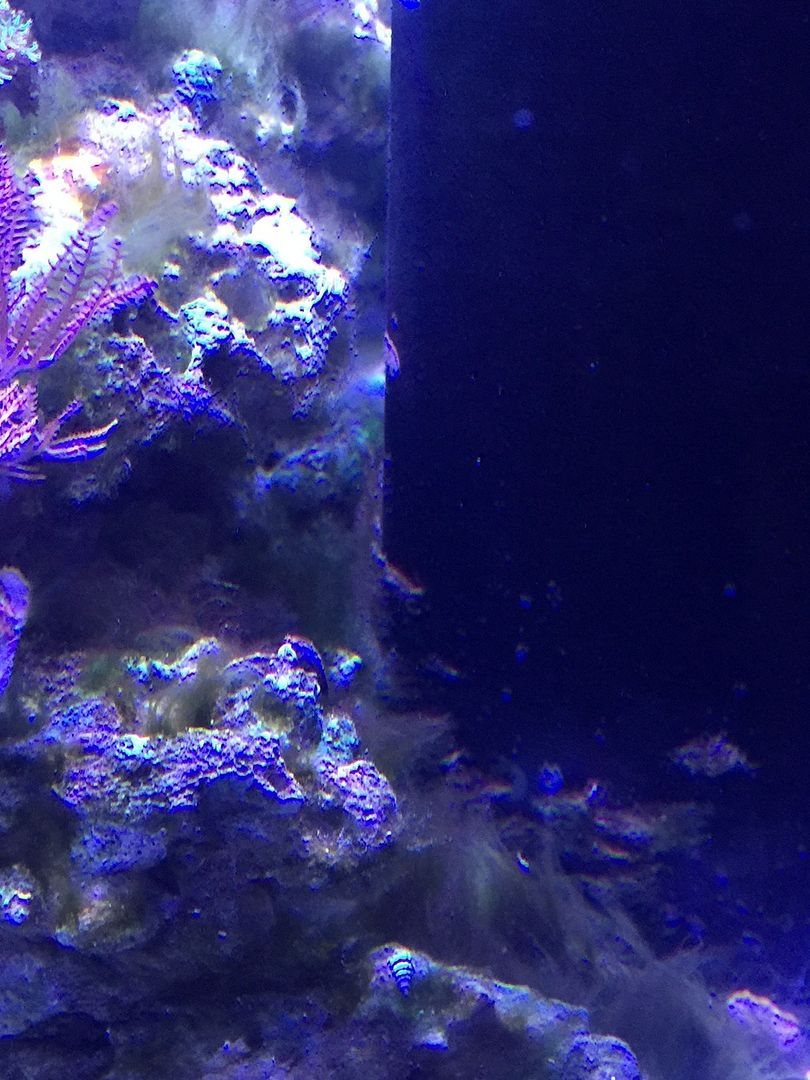
|
|
|
|

|
|
|
#9 |
|
RC Mod
 Join Date: Mar 2002
Location: Mountain View, CA, USA
Posts: 88,616
|
The water changes probably won't help because the water parameters are reasonable as is. I'd just pull off what algae is easy to get but leave the live rock in the tank, to minimize the stress. Spending a few minutes a week doing that probably will help. Keeping the GFO going often helps, too.
If you're in a hurry, then removing the live rock and scrubbing it might help, but it also can cause problems (an ammonia spike), and it's a lot of work. Personally, I'd give the GFO and trimming a month or two to show results, but I generally am not in a hurry.
__________________
Jonathan Bertoni |
|
|

|
|
|
#10 |
|
Registered Member
Join Date: Oct 2013
Posts: 736
|
Wow! Beautiful tank! Looks to be quite heavily stocked so your nutrient export will need to be sized to match.
Re: your steps 1] NoPox works well and is easy to use just follow the directions. Its not just for a few weeks and then fixed, its a continuous dosing regimen. Keep it up forever... (I started with NoPOX and now mix my own carbon source using Tom's recipe (tmz here on RC). Both work well. Skim a little wetter 2] I wouldn't bother scrubbing. Get the nutrients under control, GAC, GFO, powerful skimmer. Feed less. GHA is one of the easier pests to kill. If you can't beat it without scrubbing your nutrient export is deficient. Maybe an ATS will help. Or a better skimmer. 3] PO4 leaches in or out of rockwork to form an equilibrium. It can take a few months to knock down if you have rock that has been high in PO4. If your export if not good enough, new rock will simply absorb the nutrients and you'll be back where you started 6 months later and having done a lot of manual work for little effect Your steps 2,3 are not worth it. Step 1 is good enough, but do it all-in. Step 0] could be 3 days lights out, done now and again a month later. That can help. Along with strong skimming. -droog |
|
|

|
|
|
#11 |
|
Registered Member
Join Date: Mar 2013
Location: Central NC
Posts: 5,062
|
Ditto on the above advice. Presuming you're using a reasonably accurate nitrate and phosphate test (for this last one, you need a photometer-based test, like the Hanna checkers), water changes won't do any good, since your dissolved inorganic nutrients are zero.
The same is true for carbon dosing, whether with NoPox or DIY vinegar/vodka. The only thing that we can't test for that could be contributing to the problem would be high dissolved organic compounds. That's best addressed by wet skimming as droog suggests and frequent changes of high-quality GAC. One thing I'm a bit surprised about is that your hippo tang doesn't seem to have much interest in the algae. Be sure that you don't actually have bryopsis instead of GHA growing on your rocks (there's plenty of pics of the difference on line). Very few critters will eat bryopsis, and it's an oddball in that it will grow in very low nutrient conditions. |
|
|

|
|
|
#12 | |
|
Registered Member
Join Date: Aug 2015
Location: San Diego
Posts: 104
|
Quote:
|
|
|
|

|
|
|
#13 |
|
Registered Member
Join Date: Oct 2015
Location: WV
Posts: 39
|
You have a beautiful tank. Is that a green apple cap in your tank?
__________________
~Don't blow smoke.~ ~Lies are like snowballs, the farther they roll, the bigger they get.~ Current Tank Info: Slowly turning into a soft coral tank |
|
|

|
|
|
#14 |
|
Registered Member
Join Date: Aug 2015
Location: San Diego
Posts: 104
|
|
|
|

|
|
|
#15 |
|
Registered Member
Join Date: Oct 2015
Location: WV
Posts: 39
|
That is going to be my next coral. What do you keep ca, alk, and mag at to keep it happy?
__________________
~Don't blow smoke.~ ~Lies are like snowballs, the farther they roll, the bigger they get.~ Current Tank Info: Slowly turning into a soft coral tank |
|
|

|
|
|
#16 |
|
Registered Member
Join Date: Aug 2015
Location: San Diego
Posts: 104
|
|
|
|

|
|
|
#17 |
|
Premium Member
 Join Date: May 2008
Posts: 303
|
I have been battling with GHA for about a 1 1/2 month because I started slacking on my husbandry. I picked back up as I should have and started doing water changes frequently thinking that would help. Well it didn't at all, issue got worse. So I decided to test my RO/DI for Phosphates and that was part of my problem. I replaced all filters as well as scrubbed my 55 gallon Brute container, etc in my RO/DI unit to get my change water phosphates to read 0ppm then I started on removing as much GHA by hand that I could on maintenance day and a few days in between doing my water changes. I also added some turbo snails to clean off what I couldn't with my hands. Snails are dumb so if you add any, at night put them where you want them to go. Also, in my instance, when I placed them where there was a lot of GHA, they didn't touch it. Only when I removed most of the GHA in the area where I wanted them did they actually get to work.
Somethings else that I added to my arsenal to combat GHA is a toothbrush and this tub/tile scrubber from Home Depot. I used it to run across the back of my glass to prevent the GHA from floating all over the place when scrubbing the back glass. Worked like a champ. GHA on back glass almost all gone and not coming back with snails sucking the rest. Something else that I started doing weekly is turkey basting my live rock. If you haven't done so, get you a baster and squirt your LR and you will be amazed at how much detritus comes off your rock jest from doing this. You will also notice areas where the GHA is on your rock WILL have more detritus at the root of the GHA than other areas (at least that was my experience). I also cleaned out my overflow holes with the scrubber mentioned above to make sure that the GHA that was being caught there doesn't prevent water flow when turkey basting my live rock so that my filter socks and skimmer can do their jobs better. You can also get a more narrow scrubber and scrub the live rock in the tank where you cannot get your hand. As you know, this is a process and while doing so, you will realize that slacking on your husbandry is part of what is causing the GHA issue (not saying that you have, but in my situation it was). Now that I have the GHA at bay, I am not going to allow it to get out of control because I see the work it has taken to get it out of my aquarium. Too me, I could have gone with the quick fix solution like Algae Fix, etc. but didn't want to risk my livestock. Read good and bad thing about those products and I have invested too much $$$ to loose livestock to a chemical that cost $20. Hopefully this helps. |
|
|

|
 |
|
|